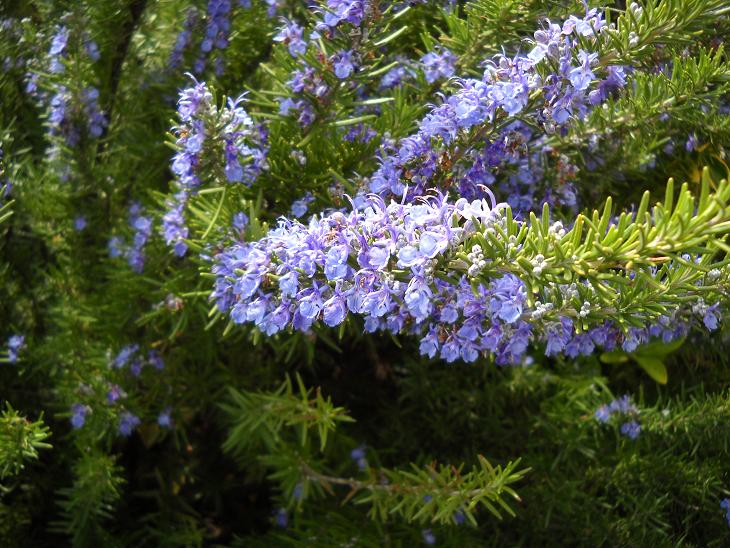In the late aughts, I moved into a house in Seattle that had a large rosemary bush in the backyard.
Then I noticed just how much fresh herbs cost in the store, for a tiny amount encased in plastic. $3 or $4 for a little spring of rosemary? When the same thing grows in my backyard for free? When most people could pick what they need off their neighbor’s front yard bush for free?
“Nobody should ever buy rosemary,” I declared.
At least not in the type of climate we have here in Seattle.

Common name(s): rosemary
Scientific name(s): Salvia rosemarinus (also called by its prior designation, Rosemarinus officinalus)
Origin: Mediterranean Europe
As a Mediterranean plant, rosemary grows year-round in our temperate climate. However, it does not always weather our occasional Snowpocalypses. I have seen multiple rosemary bushes nearly completely die off during an extended freeze, with straggling tiny branches attempting to grow during the following year. But I’ve also seen neighbors’ rosemary survive snowstorms.
Some varieties of rosemary are more cold-hardy than others, but perhaps larger, more established bushes are more likely to survive too.
In any case, if you live in any even moderately residential neighborhood in Seattle, and probably in other cities around here, you have neighbors with front yard rosemary bushes growing wild. You could take some without anyone even noticing.
Take a walk or ride around your neighborhood and look for a bush. Some of them even grow in public parks! (Ballard Commons Park’s sidewalk planting strips had a lot of rosemary in them years ago, for example.)
Plus, you can start a whole rosemary bush from one cutting. Cut a few inches of a nice fresh-looking rosemary sprig. Plant it into one of those 4″ plant containers from the nursery, or even a plastic food container with some holes poked in the bottom. Put it in a sunny location and water regularly until you see it start growing on its own. Then you can keep it as a container plant or plant it in the ground!
Under no circumstances should you be shelling out money on a regular basis for plastic-wrapped tiny sprigs of this delicious herb.
Never buy rosemary.
Uses for Rosemary
Dry your own rosemary
Hang rosemary sprigs to dry just until the needles are crisp and snappy (a few days, give or take). Start from the top of the sprig with your forefinger and thumb pinched lightly around the stem, and then run your fingers down to dislodge all the needles. The needles will keep in a sealed jar for several months, or if you are lazy, probably years.
Roast vegetables
Dried or fresh rosemary goes great with roasted potatoes, sweet potatoes, or squash. Toss needles with oiled vegetables and roast!
Rosemary simple syrup
A rosemary simple syrup makes a delightful cocktail with gin or tequila and lemon juice. Add one or two tablespoons of fresh rosemary needles to your syrup as you’re heating it, and strain out before serving.
Identification Notes
- may be large, upright, and bushy, or low to the ground and trailing
- distinctive smell when you rub the needles between your fingers
- leaves similar in appearance, but not smell or flavor, to those of thyme and some varieties of lavender
- slightly sticky/sappy wooden stem


